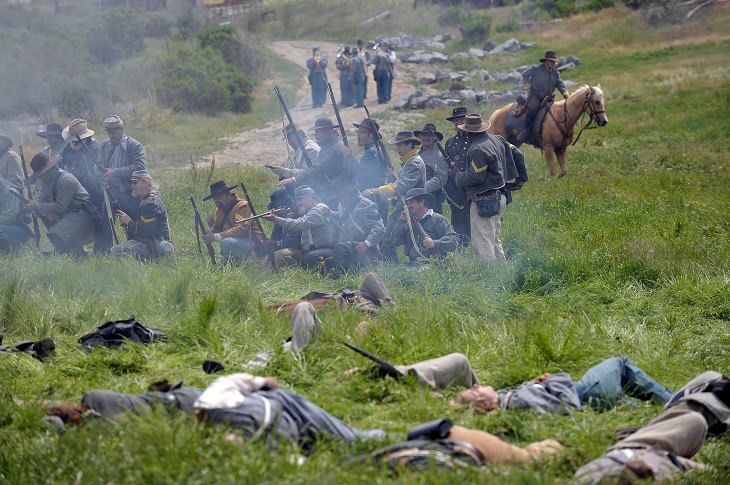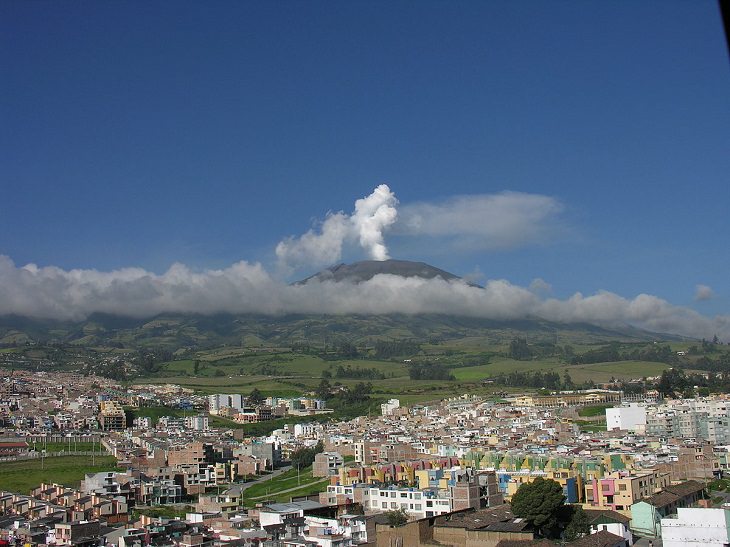

In February 2007, German paraglider Ewa Wisnerska was sucked into an unexpected thunderstorm in Australia. As testimony to that storm’s intense hatred of flying people, a Chinese paraglider had been pulled into that exact same storm earlier that day. His lifeless body was found 50 miles away.
Not content with just the one victim, the storm nabbed Ewa mid-flight and dragged her high into the air. At 3,000 feet, her exposed skin was frostbitten. Her glasses, like the rest of her clothing, were covered in ice so thick that she couldn’t even make out her own glider – which the violent weather kept collapsing, so she had to constantly battle to keep her glider in working condition.
At 20,000 feet, the air temperature was down to -58 degrees Fahrenheit, and ice had encased her entire body. The lack of oxygen also caused her to pass out. You really wouldn’t expect to wake up from a nap like that.
The previous record altitude for a paraglider was 24,000 feet. Geese fly at 27,000 feet and so did Ewa, briefly, on her way to 29,035 feet – which is the exact height of the summit of Mount Everest. At this point, the storm was getting frustrated that she was still alive, so it lifted her up to 30,000 feet just to see if she could survive the cruising height of a passenger jet, without the jet. She could.
At 32,000 feet, the storm gave up and she began to descend. At 23,000 feet, she woke up and realized that she had no way to brake or steer (due to her frozen hands), so she rode out the storm and hoped that she’d eventually land safely. Which she did, 40 miles from her starting point.
Apart from some bruising and frostbite damage, she was perfectly fine. This is probably because she was unconscious for most of the flight. Your heart rate slows when you’re out cold, and this would have played a huge part in her survival.

The Battle of Chikamagua in Tennessee during the Civil War was the second heaviest Union defeat after Gettysburg, with around 36,000 casualties. One of these casualties was Jacob Miller, who was shot between the eyes on September 19, 1863.
Miller’s Union allies thought he was dead so they left him behind. The Confederate army thought the same and walked right over him as they pushed forward. They didn’t know that Miller had the ability to sleep off a headshot.
When he woke up with a new hole in his head, he realized that he was now at the back of the Confederate line. So, using his gun as a crutch, he waddled along parallel to the fighting until he could pass back over to the Union side. Since his uniform was drenched in blood, the Confederates didn’t recognize him as an enemy.
After making it back to friendly turf, the surgeons refused to remove the bullet as they told him he was going to die anyway. In fact, the Union troops were about to retreat again, and the doctors deemed Miller too sick to move, so it looked like he was going to be left behind again.
Miller was having none of this and started retreating with them. His face was now so swollen that he had to manually lift his eyelids to see where he was going. He kept retreating with the Union troops, with no intention of stopping and dying. Eventually, he was picked up by an ambulance wagon.
Nine months after the incident, doctors finally got around to removing the shot from his head. The bullet hole never closed, and although Miller would go on to live a long life, he spent the next thirty years sweating bullets, as pieces of the shot would occasionally make their way out of his wound.

In early 2017, Jake Garrow was plowing the snow from an ice road in Ontario, Canada, when his skid loader hit an unexpected thin patch and plunged into the frozen waters, taking Garrow with it.
For the majority of us, sinking 100 feet to the bottom of a freezing lake is a terrible way to go, but Garrow is not most of us. As he sank, he looked around for the cord release that would pop the back window open. Unfortunately, he couldn’t find it. So rather than fumble around futilely, while water rushed into his cab, Garrow smashed the back window using his elbow.
Now he was free from his skid loader, but he still had to swim 100 feet through pitch-black, ice-covered water and hope that he could find the hole that he fell through. Miraculously, he managed it, and emerged from the ice with little more than a perforated eardrum.
However, his ordeal wasn’t over yet. Garrow had to walk a mile to the main road in soaking wet clothes with a wind chill of -22 degrees Fahrenheit, and then stand at the side of the road freezing because not a single motorist stopped for him.
He only managed to get a ride to the hospital because a familiar contractor happened to drive by. To add to his plight, Garrow was contacted by the Ministry of Environment and was told to get his skid loader out of their lake by June.

In 1969, at the height of the space race, Russian Cosmonaut Boris Volynov was flying a solo re-entry into Earth’s atmosphere on Soyuz 5. He was returning after having just dropped off two colleagues on another ship, and unfortunately, designated driver gigs are as awful in space as they are on Earth. During re-entry, the equipment module on Soyuz 5 failed to detach, which messed up the balance of the spacecraft and caused it to turn around.
This was a major problem, as the heat of bursting through Earth’s atmosphere was expected to burn away a good three inches of the special ablator coating in the thicker side of the vessel, which had a good six inches of it. Unfortunately, Volynov was now flying back into Earth backward, and the side of his ship facing the flames was just a mere inch thick.
To add to this, his body was also being submitted to nine times the gravitation force of Earth, making all attempts to fix the dire situation border-line impossible. At this point, ground control was already busy passing around a hat to collect money for his family. Volynov was facing certain death until he suddenly noticed something: The malfunctioning part of the ship that had failed to detach was also getting sheared off by intense heat. Summoning all his strength, he managed to maneuver the Soyuz 5 to its correct position in the nick of time.
Problem solved! Well, not exactly. He had new problems to contend with. The ships parachute had taken damage and could only partially deploy. To add to this, the rockets designed to soften the landing had also failed completely. Soyuz 5 hit the ground like a meteor. Volynov survived this too, but he was thrown around the cabin and broke a number of teeth.
He now had another problem to contend with. He had landed in the Ural Mountains, far away from his intended landing spot in Kazakhstan. The weather outside was -36 degrees Fahrenheit. If he stayed put, he’d be long dead before anyone rescued him.
When the rescue team arrived hours later, they found an empty Soyuz 5. However, they followed a set of footprints, peppered with blood and bits of teeth, and found Volynov warming himself in a peasant hut, which he had managed to locate by following a distant column of smoke.

In January 1993, a group of scientists from 15 different countries gathered in Colombia to assess the danger of the 9,000 foot Galeras Volcano, which has irrupted irregularly for centuries. The volcanologists thought it would be fairly safe as it had last erupted six months earlier, and no seismic activity indicated that it would do so again. Therefore, 16 people ventured into its cone to gather samples and valuable information.
To its credit, the volcano waited until the most dramatic moment to launch its attack. An hour earlier, and all the scientists would have perished as they stood right at the inner crater. An hour later, and they would have been at a relatively safe distance. But no, Galeras waited until they had just stopped work for the day, and still had a sporting (yet slim) chance of escaping. Then, and only then, did the ground start to rumble. The volcano erupted and sent a 90-story cloud of ash, smoke, and gas into the air.
Three scientists were hit with a blast of heat so hot that it reduced them to ash. Six were bombarded and crushed to death by scalding rocks. When the dust settled, nine scientists had been killed, and those who were still alive were seriously injured.
Dr. Stanley Williams, the leader of the group, was standing right by the crater’s rim when the eruption came. He managed to avoid the blast of heat but was still assaulted by a maelstrom of white-hot boulders. A rock struck him in the head, instantly shattering his skull and sending bone fragments deep into his brain. He managed to stumble away, only to have his legs savaged by another rock bombardment.
That might have been the end for him if it wasn’t for two of his colleagues, Marta Calvache and Patty Mothes. Both had inexplicably decided to climb toward the volcanic eruption to look for any survivors. They managed to locate Williams and drag him to safety.
Source: cracked
Images: depositphotos